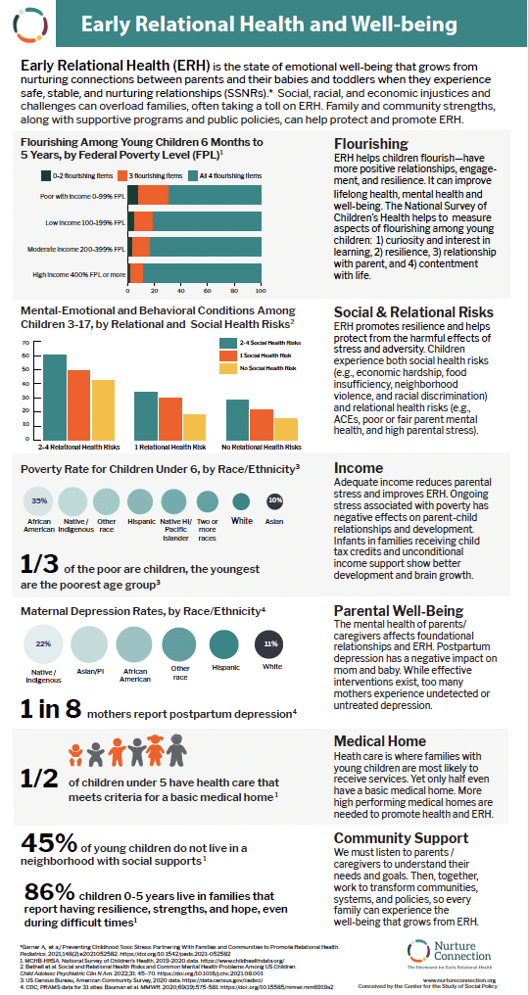Imagine if building a community for children to thrive is as easy as drawing three concentric circles. In the centermost circle is love, consistency, security, and stability laying the groundwork for children to thrive. In the next circle are protective factors – what parents and caregivers need to create the conditions for the inner circle.
Protective factors include supportive relationships, spiritual practices, safe communities, parental resilience, etc. The outer circle is comprised of concrete supports like cash assistance, food, housing, and quality healthcare. These goods and resources may be ongoing and not just provided in times of need, allowing the other circles to strengthen and create the conditions to thrive. For some families these circles already exist, and the idea of layered conditions and attributes is gaining traction for all families.
Nurture Connection is the Early Relational Health Hub transforming systems and advancing policy at The Center for the Study of Social Policy. In their July newsletter, they offered a summary of findings that reinforces what we have come to understand: concrete supports and protective factors are essential for children to flourish.

Nurture Connection's emerging research suggests concrete supports not only strengthen families, but proactive supports in the form of ongoing child tax credit, safe and stable housing, and quality affordable childcare could prevent the most prevalent reason the child welfare system becomes involved with families – allegations of neglect. Nationwide, the most common maltreatment type is neglect, failing to meet a child's basic physical and emotional needs at 61% (e.g., lack of supervision, exposure to domestic violence, food insecurity, and/or inadequate housing).
Prioritizing concrete supports for families is an investment in children’s health and wellbeing. Building a community where all children thrive requires a significant mindset shift, a financial investment, and policies to support transformation.
Thinking proactively, consider these questions:
- Can you advocate to enact policies and create resources that ensure all families in your community have permanent and safe housing, quality medical care, quality childcare and early education, and a form of child allowance?
- Can you explore how concrete supports and the data that backs up its efficacy aligns with your organizational vision?
- What mindset shift can be made at the entry point to child welfare, prior to policy change?
- How can your public or private organization recognize and leverage the protective factors families have?
- Is there a role to advocate for concrete supports at your organization?
- Service providers, advocates, and legislators: are we listening to parents?